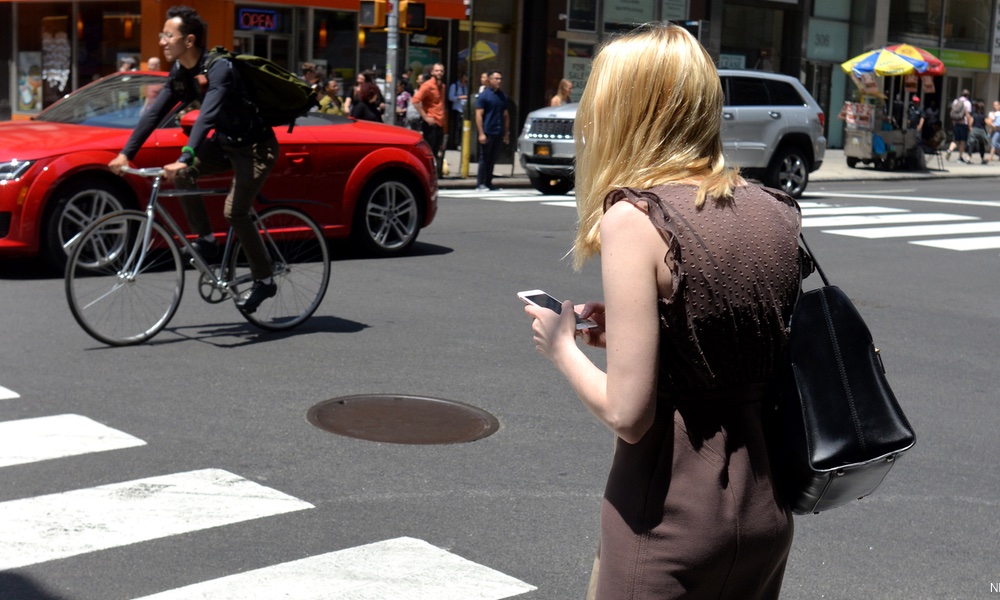About 270,000 pedestrians die worldwide every year, approximately 22 percent of all road traffic fatalities. With more and more pedestrians using their smartphones while walking and crossing the street, the safety risks presented by distracted pedestrians are an increasing cause of concern. And it's not just pedestrians who are in danger. The use of mobile devices by pedestrians puts both pedestrians and drivers at risk.
“Given the ubiquity of smartphones, social media, apps, digital video, and streaming music…distracted walking and street crossing will be a road safety issue for the foreseeable future,” the authors of a Canadian study write.
Public awareness campaigns and signs warning against talking and texting while walking do not seem to make a difference. “It is very difficult to change people’s behavior,” Jeffrey Caird, corresponding author on the study, told TheDoctor. Even when crossing the street, people check their phone when it rings, or they continue using their phone if they are talking or texting.Text messaging seemed to be the most dangerous pedestrian behavior.
The researchers pooled and analyzed data from 14 studies enrolling a total of 872 participants, and systematically reviewed data from another eight observational studies. All the studies looked at one or more of five behaviors related to walking or crossing the street: time taken to begin walking or begin crossing the street; missed opportunities to cross safely; the amount of time taken to cross the street; looking left and right before crossing; and close calls or collisions with vehicles or other pedestrians.
When pedestrians were talking on the phone, they took slightly longer to start crossing the street. They also more missed opportunities to cross safely, compared to those not using a phone. Text messaging seemed to be the most dangerous pedestrian behavior. People who were texting had significantly lower rates of looking left and right before crossing the street, or while crossing it. Texting was also associated with an increased number of close calls or collisions with vehicles or other pedestrians.
The review of the eight observational studies found that anywhere from 12 percent to 45 percent of pedestrians were distracted. Across these studies, distracted behaviors included talking, texting and listening to music. Participants’ behavior was affected by several factors, including gender, time of day, whether the person crossed the street alone or with a group, and how fast the person was walking.
More studies are needed to get a clearer picture of the relationship between distracted pedestrians and their risk of injury, the researchers say. For example, when in a group, some pedestrians may shield others from oncoming cars, or warn them about fast-approaching vehicles. Children or teens with less experience navigating the streets alone may be more at risk for a close call or collision if they are distracted. And older pedestrians who are likely to be slower may be more at risk for a close call or collision while distracted.





